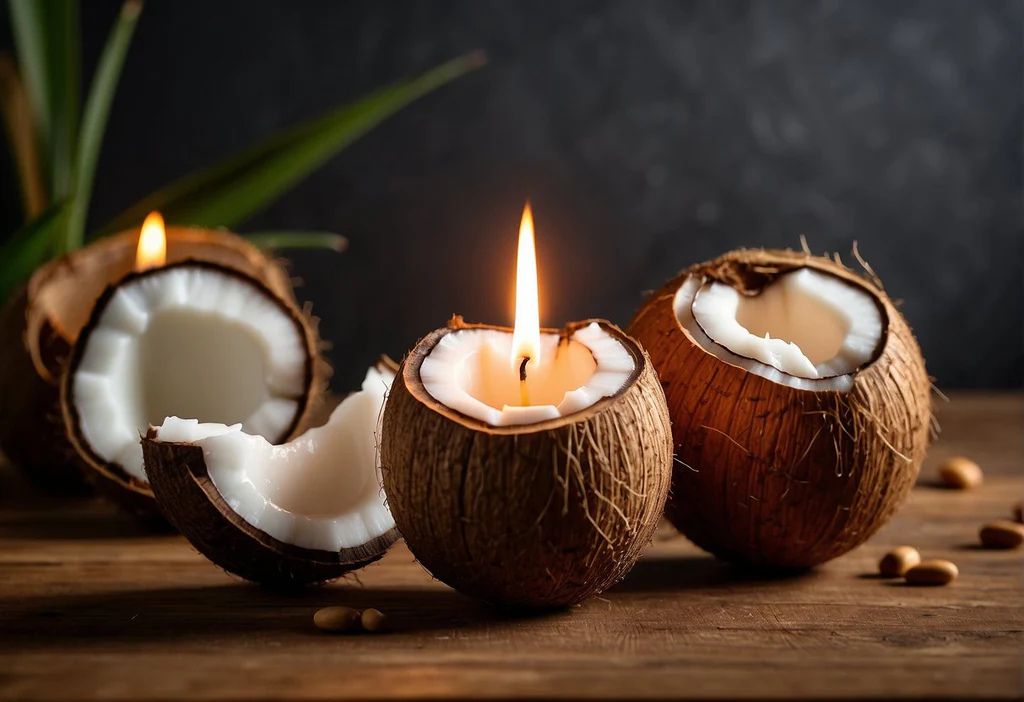Candles have been used for millennia across cultures all over the world for their calming and soothing properties. A candle’s wax is the primary component that determines its burn quality, scent throw, and overall performance. While there are multiple wax types available in the market, soy, coconut, and paraffin wax remain the go-to choices for most candle makers. In this article, we will explore the key differences between these wax types.
Soy Wax
Soy wax is derived from soybeans, which are an entirely natural, renewable, and eco-friendly resource. It’s a relatively new addition to the candle making world, having emerged in the early 1990s. Soy wax has quickly become the preferred choice of many candle makers and buyers due to its natural properties and environmentally friendly production process.
Advantages of Soy Wax:
Long Burn Time: Soy wax candles burn up to 50% longer than paraffin candles.
Low Melting Point: Soy wax has a lower melting point than paraffin wax, reducing the risk of burning too hot, which can affect scent quality and cause jar blackening.
Clean Burn: Produces little-to-no soot, resulting in a cleaner burn that doesn’t deposit black soot onto the jar or into the air, which can lead to respiratory issues and stains on nearby surfaces.
Coconut Wax
Coconut wax is another natural, renewable, and eco-friendly wax option that has gained popularity among candle makers in recent years. Coconut wax is derived from coconut oil and is known for its creamy white appearance and natural anti-bacterial and anti-fungal properties.
Advantages of Coconut Wax:
Cooler Burn Temperature: Burns at a cooler temperature than soy wax, resulting in a more even and slower burn.
Excellent Scent Throw: Can hold a larger amount of fragrance, providing robust and long-lasting scents in candles.
Blending: Often blended with other waxes like soy to enhance performance. Pure coconut wax can be challenging to work with due to its delicate structure and inconsistencies in texture.
Paraffin Wax
Paraffin wax is a petroleum-based wax that has been in use for candle making since the 1800s. It’s often used because it’s cheaper than natural wax types like soy and coconut wax, but it’s not an eco-friendly option.
Advantages of Paraffin Wax:
Versatility: Easy to work with and suitable for detailed and intricate designs.
High Melting Point: Available in a range of melting points, allowing for greater control over the candle’s burn time.
Affordability: Generally less expensive than natural waxes.
Disadvantages of Paraffin Wax:
Soot and Toxins: Produces soot and toxins when burned, which are less healthy for the environment.
Non-Renewable Source: Derived from petroleum, making it a less eco-friendly option.
Source and Sustainability
Another aspect to consider when choosing a wax type is its source. With soy and coconut wax, you can trace the source of the raw material back to its specific location.
Soy Wax:
Predominantly grown in the US, with a smaller percentage coming from South America.
Coconut Wax:
Usually sourced from Asia, specifically from regions with a high yield of coconuts.
Paraffin Wax:
The source is less traceable because it’s a byproduct of the oil refining process.
It’s vital to choose the wax type that best suits your needs and aligns with your values. Natural waxes like soy and coconut wax are eco-friendly and provide a cleaner, longer, and more fragrant burn experience than paraffin wax. While paraffin wax candles are relatively inexpensive, their non-renewable source and harmful chemicals make them a less desirable option. Consider the source of the wax type, the burn quality, scent throw, and eco-friendliness before selecting the wax type that’s right for you.
For all your wholesale candle making supplies in Toronto, visit Rama Candles, your go-to source for high-quality materials and expert guidance.



